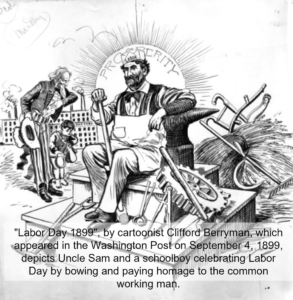This is the second Labor Day holiday in a row where many workers have little to celebrate. The unemployment rate in the United States still lingers above 9 percent, with some states still experiencing double-digit unemployment rates. Mohamed El-Erian, CEO and co-CIO of PIMCO, penned an op-ed last month examining the long-term effects of persistently high unemployment rates [“The Real Tragedy of Persistent Unemployment,” Wall Street Journal, 9 July 2010]. He writes:
“Almost half of unemployed Americans have been without a job for over six months. The average duration of unemployment, which hit a post-World War II record many months ago, continues to go up. … The longer it takes to understand and address these issues, the more likely the U.S. will get stuck in a protracted low growth/high unemployment trap. In addition to considering the welfare cost of substantial joblessness, policy makers should keep in mind the following four facts:
“First, persistently high unemployment erodes the skills of any labor force, especially when joblessness is a big problem among the young. This reduces future productivity and growth potential.
“Second, a high rate of joblessness puts pressure on inadequate social safety nets like the unemployment benefit system. It also exacerbates the strain on government budgets already stretched at both the federal and state levels.
“Third, stubbornly high unemployment makes those who are employed more cautious. By spending less, they aggravate the economic slowdown.
And finally, high unemployment has historically induced companies and countries to become more inwardly oriented. Many firms have already moved to a ‘self-insurance’ mode, including holding large cash balances rather than investing in equipment and hiring people.
“Put all of this together, and you begin to get a sense of the importance of the employment reports. They are more than indicators of what has happened; they also shed light on what will likely happen going forward. The greater the persistence of high unemployment now, the higher the likelihood that it will drive future behavior of governments, companies and individuals.”
Mr. El-Erian insists that “policy makers should also come up with a comprehensive strategy that focuses on improving human capital, particularly through a greater emphasis on education and training; expanding infrastructure and technology investments, in part by creating a more friendly tax system; encouraging a bigger translation of scientific advances into economy-wide productivity gains; and better protecting the most vulnerable segments of society.” Delays, he concludes will only result in greater damage. I agree with El-Erian that America needs to get back to work.
As you celebrate this holiday, take a moment to remember that working people made this country great and they still can. Because America’s population continues to rise, its work force continues to hold the hope for a brighter future. That’s something to celebrate. As Samuel Gompers, the famous labor organizer once said, “Labor Day differs in every essential from other holidays of the year in any country. All other holidays are in a more or less degree connected with conflict and battles of man’s prowess over man, of strife and discord for greed and power, of glories achieved by one nation over another. Labor Day is devoted to no man, living or dead, to no sect, race or nation.” Have a great day.




